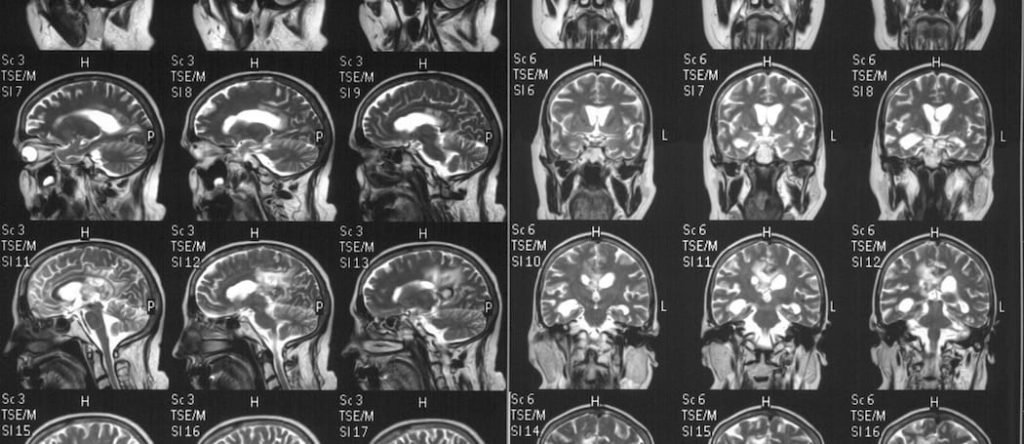Cocaine is a potent stimulant drug of abuse known for its ability to substantially alter the brain function of heavy and/or habitual users. Some cocaine users have a personality trait called impulsivity, which makes them unusually likely to act in rash or reckless ways. In a study published in September 2014 in the journal Drug and Alcohol Dependence, a team of Belgian and Dutch researchers sought to determine if impulsive cocaine users develop unusual, distinctive changes in their normal brain size, normal brain surface area and normal brain tissue thickness.
Cocaine and the Brain
When introduced into the bloodstream, cocaine travels to the brain and produces intense pleasure by increasing levels of a key chemical called dopamine. Like all stimulants, the drug also increases the general rate of cell-to-cell communication in the brain and in the spinal cord (which together form the central nervous system). Cocaine reaches the brain quickest when injected into a vein or inhaled in the form of “crack” smoke; however, these forms of use also produce the shortest-lasting drug effect. Conversely, inhaled cocaine takes longer to reach the brain but produces its impact on brain function for longer amounts of time. Even when inhaled, the drug triggers its classic effects relatively briefly. Cocaine users often offset this short duration of activity by consuming the drug repeatedly over fairly short intervals. Such repeated exposure significantly increases the odds that cocaine consumption will trigger lasting changes in daily brain function and make the brain physically dependent on further intake of the drug. Practically speaking, cocaine dependence is more or less synonymous with uncontrolled cocaine addiction.
Impulsivity
Impulsivity (i.e., impulsive behavior) is natural to humans. Since children have yet to develop the parts of the brain that keep impulsive tendencies under control, they’re far more likely to act rashly than adults. Teens have partially developed impulse control, and therefore typically experience partial success when trying to keep impulsive behaviors in check. By the time they reach their mid-20s, most adults have reached their full ability to rein in their rash or reckless tendencies. However, some adults continue to display the types of impulsive behavior normally associated with adolescence or earlier stages of childhood. Psychologists and psychiatrists refer to this adult tendency toward impulsive behavior as a fixed personality characteristic called trait impulsivity. Adults affected by trait impulsivity typically have heightened odds of developing diagnosable problems with drug and/or alcohol consumption. They also have elevated risks for non-substance-related mental health conditions such as personality disorders and bipolar disorder-related mania.
Cocaine’s Impact on Brain Shape and Size
In the study published in Drug and Alcohol Dependence, researchers from Belgium’s University of Antwerp and The Netherlands’ Radboud University and Academic Medical Center used data gathered from 88 men between the ages of 18 and 55 to explore the connection between impulsivity in cocaine users and unusual changes in brain shape, size and thickness. Fifty-three of these study participants were regular cocaine consumers, while the remaining 35 participants did not have a history of using the drug. The members of both groups underwent MRI (magnetic resonance imaging) scans that revealed the characteristics of their brain structures. In addition, the members of both groups took a screening test, called the Barratt Impulsiveness Scale, commonly used to measure impulsivity levels. The researchers looked for structural changes in nine key brain areas. After collating the results of the MRI scans with the results of the impulsivity screenings, the researchers concluded that, compared to their age counterparts who don’t use cocaine, regular cocaine consumers experience several changes in brain structure. In some parts of the brain, cocaine users have unusually large or thickened brain structures; in other parts of the brain, they have unusually small or shrunken structures. Critically, the researchers determined that several of the observed cocaine-related changes are clearly associated with high levels of impulsivity in affected individuals. The study’s authors believe that the differences they detected in the brains of impulsive cocaine users may reflect the telltale behavioral changes found in people who lose control of their cocaine intake and develop diagnosable symptoms of stimulant abuse or stimulant addiction (known collectively as stimulant use disorder). Interestingly, the cocaine users who also regularly consumed marijuana typically had smaller variations in brain size, shape and thickness than those users who did not consume marijuana.

